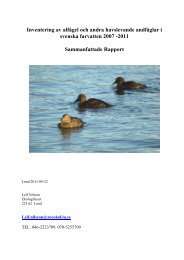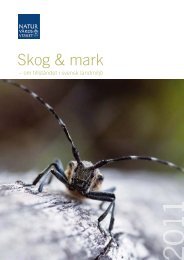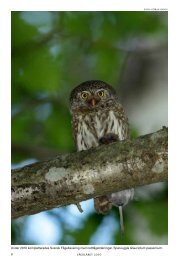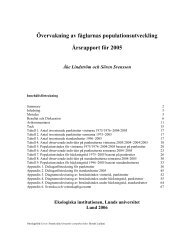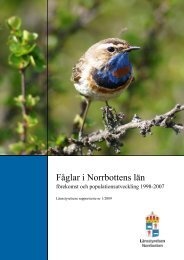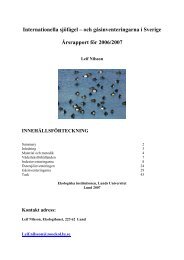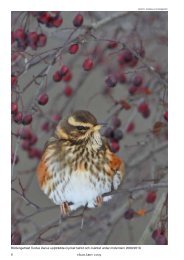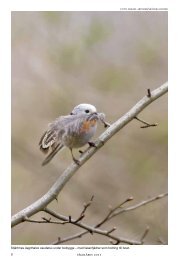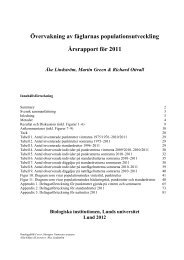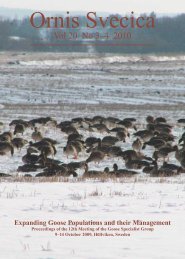Distribution and numbers of wintering sea ducks ... - Lunds universitet
Distribution and numbers of wintering sea ducks ... - Lunds universitet
Distribution and numbers of wintering sea ducks ... - Lunds universitet
Create successful ePaper yourself
Turn your PDF publications into a flip-book with our unique Google optimized e-Paper software.
ters, restricted to the innermost bays <strong>of</strong> the archipelagos.<br />
The 2010 winter was a contrast to 2009, being<br />
the coldest winter since 1987. The archipelagos got<br />
covered by ice early <strong>and</strong> at the time <strong>of</strong> the survey<br />
there was compact ice from the Stockholm archipelago<br />
to finl<strong>and</strong>. The major <strong>of</strong>fshore banks were<br />
surveyed during the winter but parts <strong>of</strong> the archipelagos<br />
could not be covered until the first days <strong>of</strong><br />
April. Coverage <strong>of</strong> the counts in 2010 is seen from<br />
figure 2.<br />
2011 was another cold winter with very cold<br />
weather already in December 2010. There was<br />
open water along the south coast in Scania, but the<br />
archipelagos from Kalmarsund in the south were<br />
totally frozen <strong>and</strong> there was only small areas <strong>of</strong><br />
open water in the outermost parts <strong>of</strong> the archipela-<br />
figure 2. Coverage <strong>of</strong> the aerial surveys in <strong>of</strong>fshore Swedish<br />
waters in the winters 2009, 2010 <strong>and</strong> 2011. Black lines =<br />
line transects, red dots = area-based counts. for ice cover in<br />
2011, see figur 3.<br />
Täckningen med flyginventeringar i svenska utsjöområden<br />
vintern 2009. Svarta linjer = linjetaxeringar, röda punkter =<br />
områdesbaserade inventeringar. För istäcke 2011, se Figur 3.<br />
gos north <strong>of</strong> Kalmarsund (figure 2). The ice extended<br />
east over the Baltic Sea <strong>and</strong> the important<br />
<strong>of</strong>fshore areas in the Baltic republics were all icecovered<br />
(figure 3).<br />
The southern parts <strong>of</strong> the Baltic could be covered<br />
during the winter proper, whereas the archipelagos<br />
further north could not be covered until<br />
the first days <strong>of</strong> April in some cases. This is <strong>of</strong> no<br />
problem for the long-tailed Ducks that leave the<br />
Baltic in May but the late surveys could not be<br />
used for the Eider <strong>and</strong> the Scoters. These species<br />
are however present in small <strong>numbers</strong> in these<br />
areas during the winter as shown by the countrywide<br />
surveys <strong>of</strong> the archipelagos. The <strong>of</strong>fshore<br />
surveys in 2009 were for some species supplemented<br />
by observations from the annual midwinter<br />
counts for some inshore areas (mainly on west<br />
41



